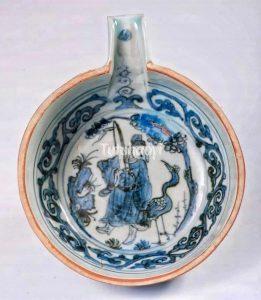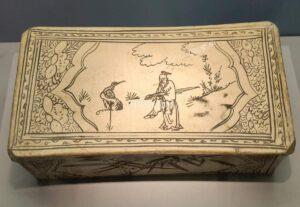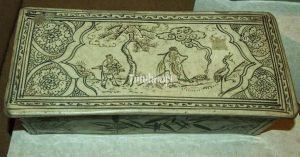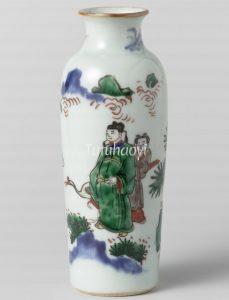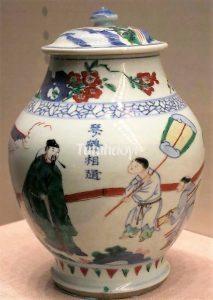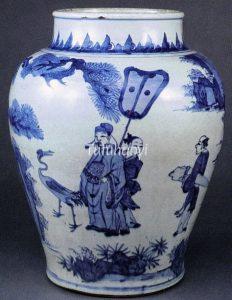A Qin Zither and a Pet Crane
一琴一鹤
© Tutuhaoyi.com owns the copyright of the description content for the images attached. Quoting all or part of the description content on this page is permitted ONLY IF ‘Tutuhaoyi.com’ is clearly acknowledged anywhere your quote is produced unless stated otherwise. (本页描述内容版权归Tutuhaoyi.com所有,转发或引用需注明 “Tutuhaoyi.com”, 侵权必究, 已注开源信息的条目除外。)
Zhao Bian (赵抃, 1008–84) was held in high esteem all his life and posthumously because of his incorruptibility and sound statesmanship during his entire career. His prize possessions were legendarily well-known: a qin zither and two pets, a crane and a tortoise. They were inseparable from him wherever he was posted.
Some time during the years between 1064 and 1068, Zhao Bian was nominated as governor of Chengdu, which was a prosperous town contaminated by extravagant upper echelons. Zhao went there alone with his musical instrument and two pets without an entourage. In time, his good leadership made a name for himself and people of neighbouring areas moved to central Sichuan to seek better opportunities.
Once he had an audience with the emperor in court, the emperor asked Zhao, ‘Did you really go to Sichuan alone with only a qin zither and a crane as they say?’ Zhao modestly kowtowed to thank the emperor for his recognition.
Up till today, the saying ‘one qin zither and one crane (一琴一鹤)’ has been used to praise a virtuous official.
Read Dr Yibin Ni’s research article here for more interesting discussion.
Fig 1: porcelain washer with underglaze blue decoration, 1339, excavated from the graveyard of Zhang Dafu in Xi’an, Shaanxi Province, China
Fig 2: Cizhou ware pillow, Yuan dynasty (1271–1368), courtesy of the National Museum of China, Beijing, photography by Rachel Ma
Fig 3: Cizhou ware pillow, Yuan dynasty (1271–1368), courtesy of China Cizhou Kiln Museum, Ci County, Handan, China
Fig 4: porcelain vase with underglaze blue and overglaze enamelled decoration, mid-17th century, courtesy of the Rijksmuseum, Amsterdam
Fig 5: lidded porcelain jar with underglaze blue and overglaze enamelled decoration, mid-17th century, courtesy of the Palace Museum, Beijing, China
Fig 6: porcelain jar with underglaze blue decoration, Kangxi period (1662–1722), Qing dynasty, courtesy of the Museum-Residence of Dr. Anastácio Gonçalves
Fig 7: porcelain dish with underglaze blue decoration, Kangxi period (1662–1722), Qing dynasty, previously in the collection of the Metropolitan Museum of Art, New York
